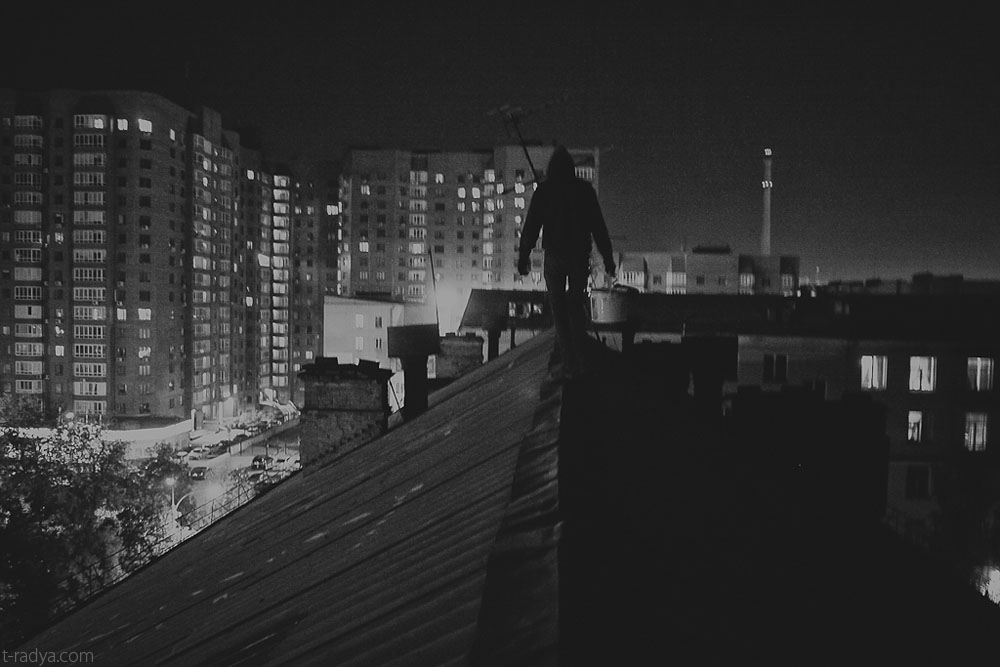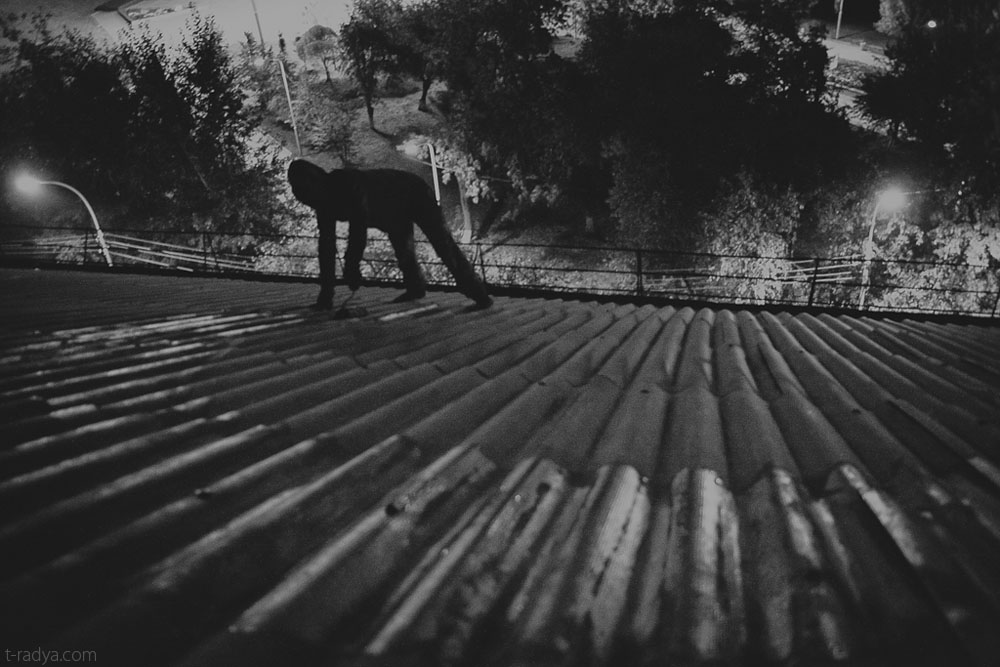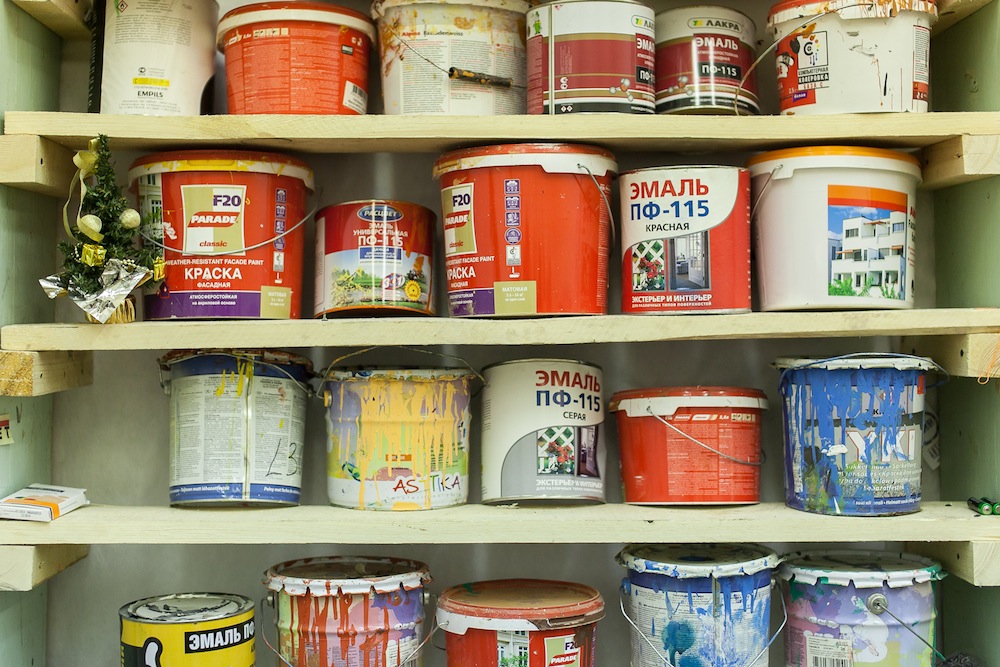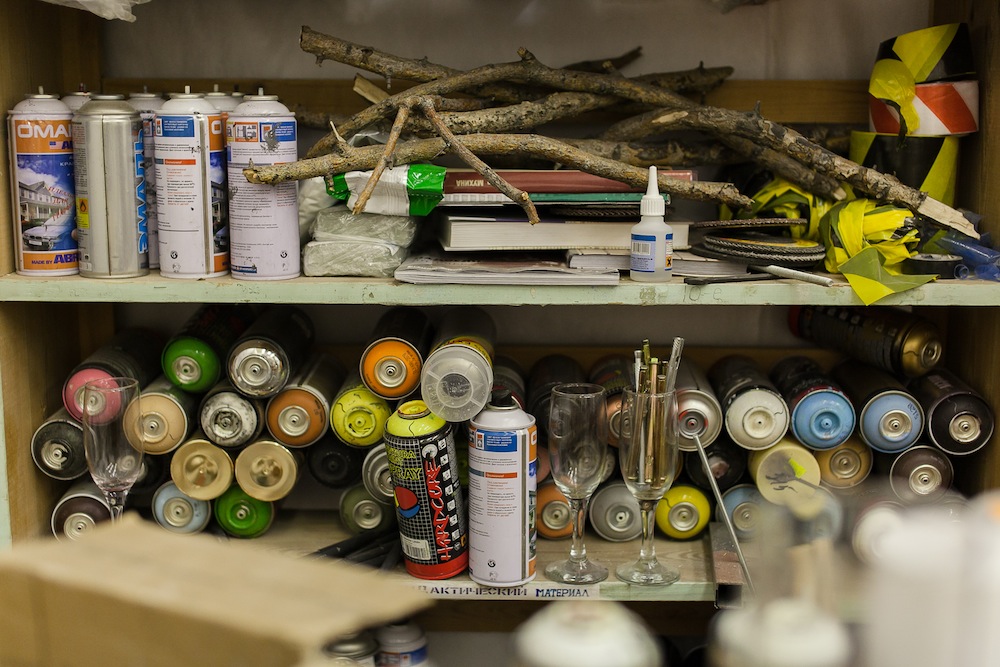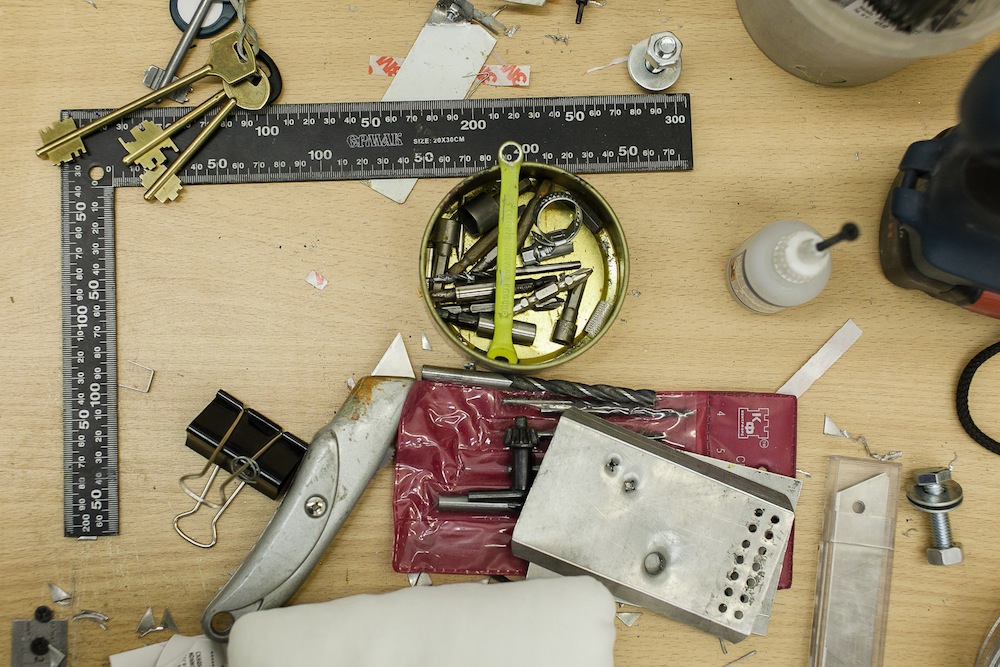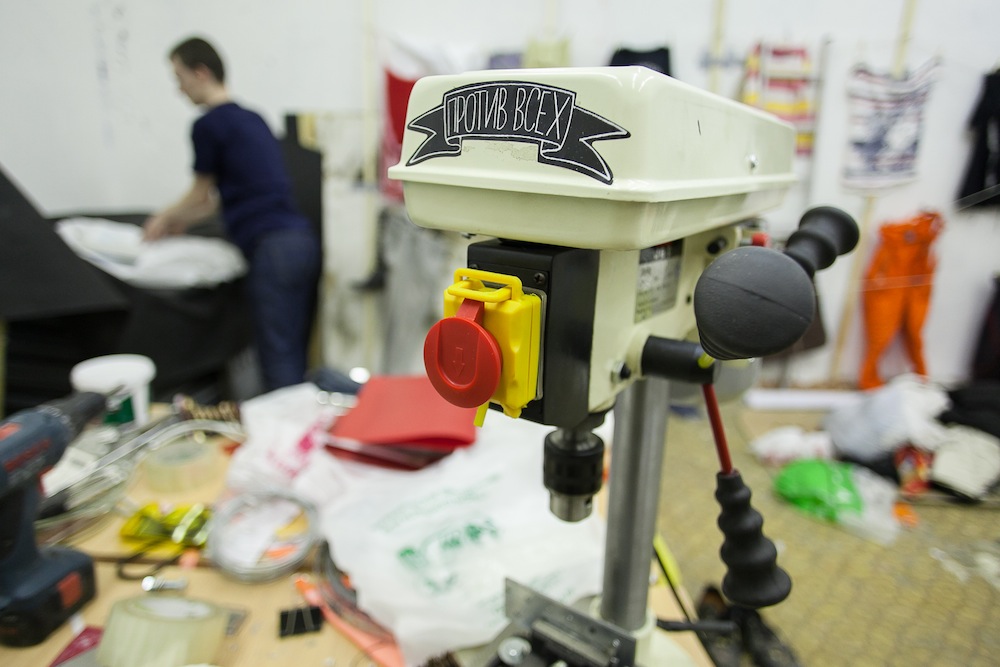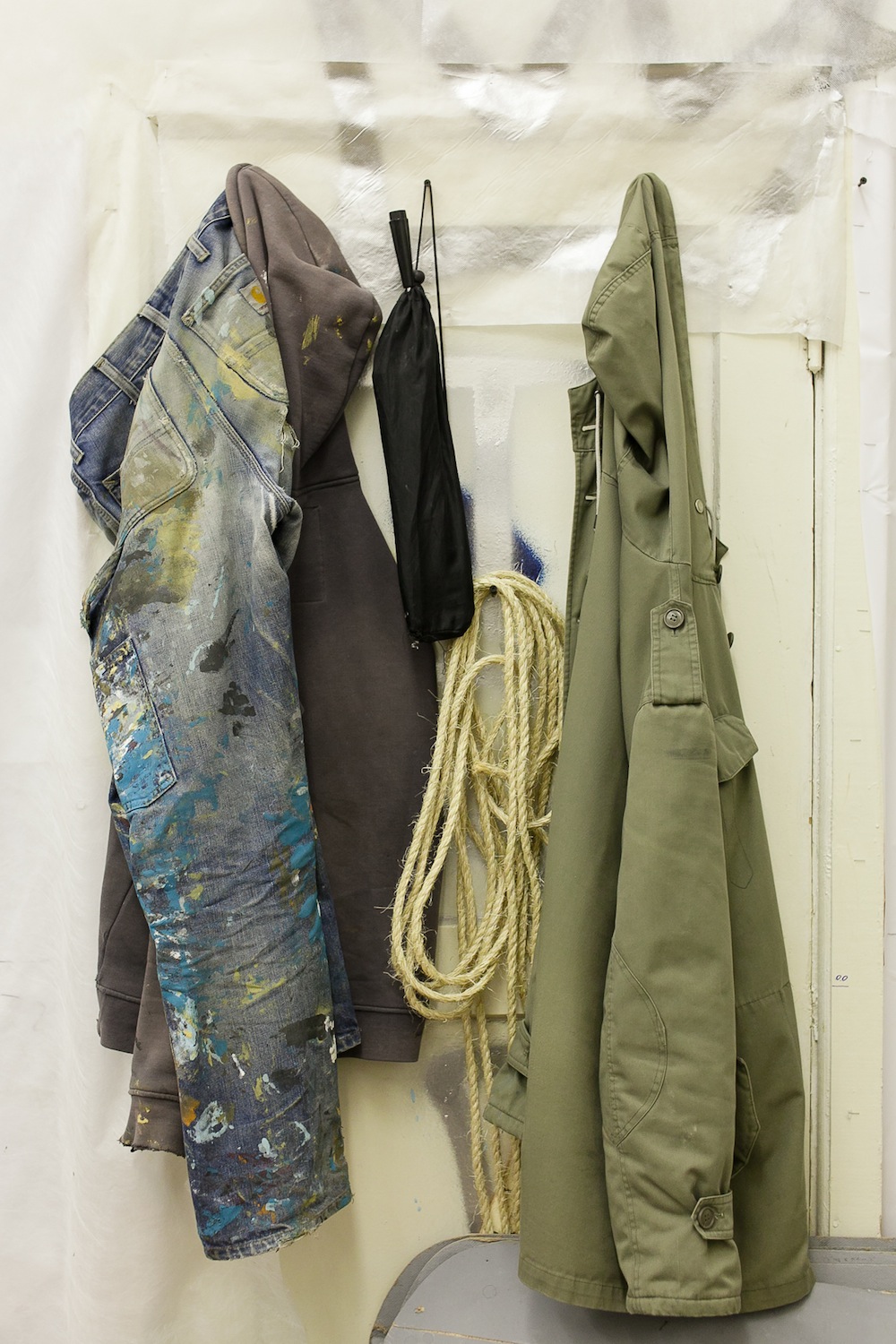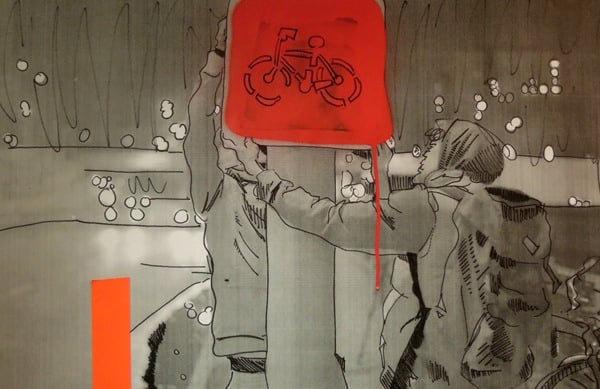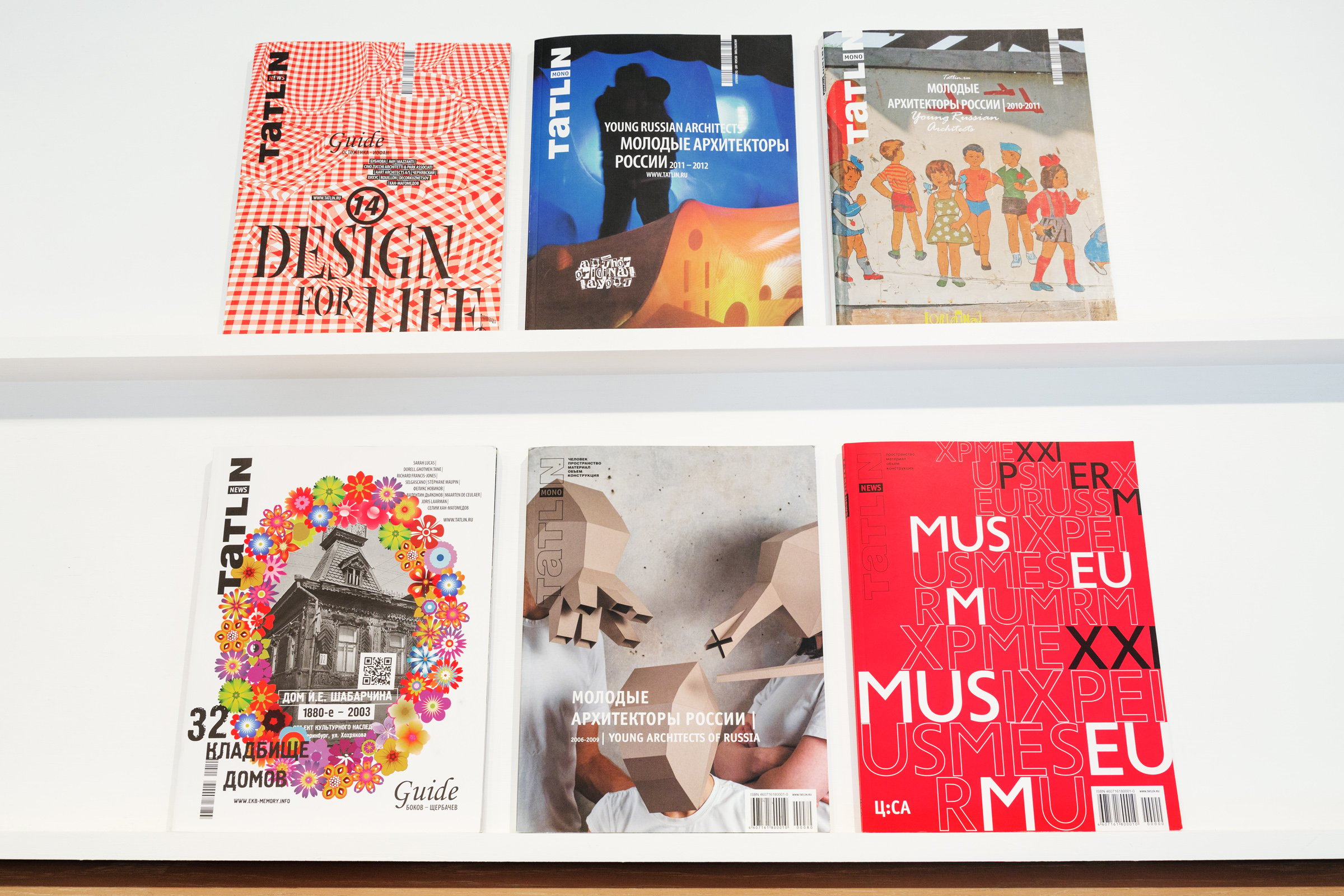Outsider art: the writing is on the wall for street artist Timofei Radya
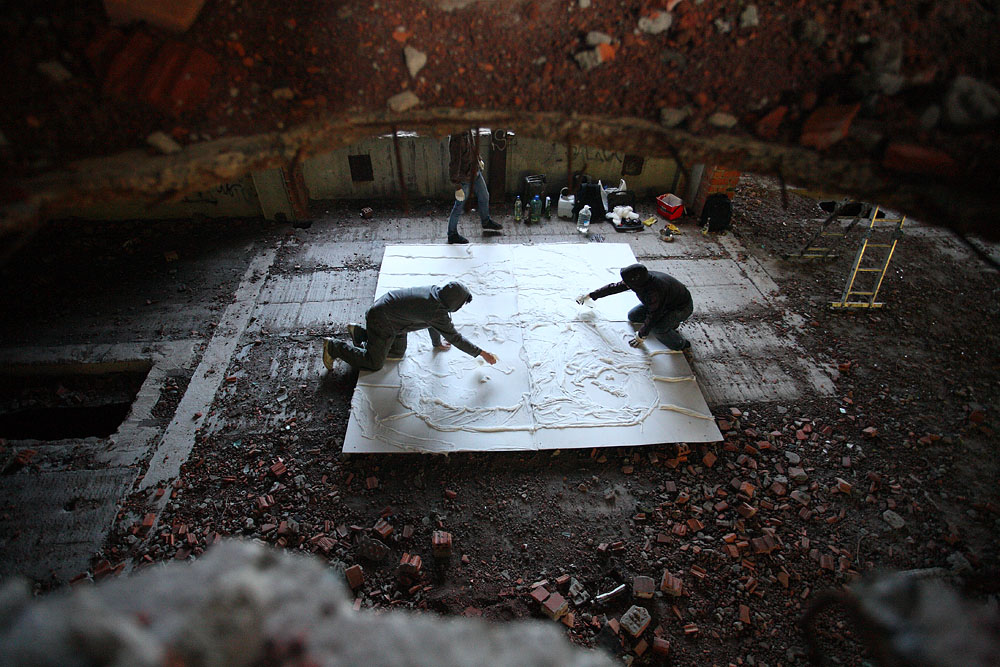
Timofei Radya has brought street art to Yekaterinburg. With incendiary results
For street artist Timofei Radya, the city of Yekaterinburg is a canvas. His provocative, Situationist-inspired imagery has brought an arresting visual dynamism to the city and won him acclaim as one of the brightest talents on the region’s art scene. “Everyday things can shine — walls, bridges, roofs, whatever,” says Radya. “It is very important because life, in the end, takes place in everyday conditions. This is a huge, endless resource.”
Startling and iconic, Radya’s works are also tailor-made for the digital sphere, with images of new art pieces routinely going viral once he has created them. He is currently the most famous young artist on the Yekaterinburg scene with a former residency at the city’s National Centre for Contemporary Art (NCCA) and exhibitions at high-profile art spaces such as Winzavod in Moscow. For one of his most recent projects — a comment on the fragility of Russian might — 24-year-old Radya and his crew headed into a nearby forest, dressed in army fatigues. Against a backdrop of snow-flecked fir trees, they erected a giant house of cards from riot shields topped with a throne-like chair. While the resulting pyramid took hours to assemble, it came crashing down in just minutes.
Impermanence is a theme that runs through much of Radya’s work. He painted the snow of a Yekaterinburg square crimson red for a project called Red Square; installed a monument to the poems of Russian writer Joseph Brodksy in the middle of the river Iset; and created a gigantic memento mori by painting the pillars of a bridge to look like dominos. “Over time the pillars of this grand bridge will become old, fall down, and tumble, just like a row of dominos,” says Radya. “This basically means if things are not eternal — and there are no eternal things — we can change them as and when we want.” In the same way, it wasn’t long before blades of grass poked through the melting snow in the Yekaterinburg square and Brodsky’s poems turned to pulp.
Sitting on a beanbag in Kleister, a bookshop-cum-art space in the NCCA, Radya is at times hesitant, at times confident; his grey hoodie shifts awkwardly on his slender but sinewy frame. He has the leathery hands of a labourer and an intense gaze. His smiles each time he spies someone heading towards his studio, which he uses to sketch out ideas and test-run others.
“Tag the walls, fuck the system. Never talk about the club. The rest is boring”
Unlike his previous existence, skulking in the shadows and dodging the authorities, Radya’s residency at the NCCA has given him a high level of visibility — and legitimacy. Such a stamp of approval is in many ways at odds with the function of a street artist: to use the urban environment as a space for unsanctioned social commentary. Radya is not the first such figure to be faced with this dilemma. Most well known are the likes of France’s JR and the UK’s Banksy, whose works sell for hundreds of thousands of dollars at auction houses today. “I think it’s great,” says Radya, about Banksy’s success, before touching on the artist’s faux documentary Exit Through the Gift Shop, which pokes fun at the establishment’s readiness to make stars out of street artists. Although Radya does not insist on anonymity, there are no images of his face on his website, allowing him to maintain a certain mystique. An online search eventually yields a single photo on Flickr.
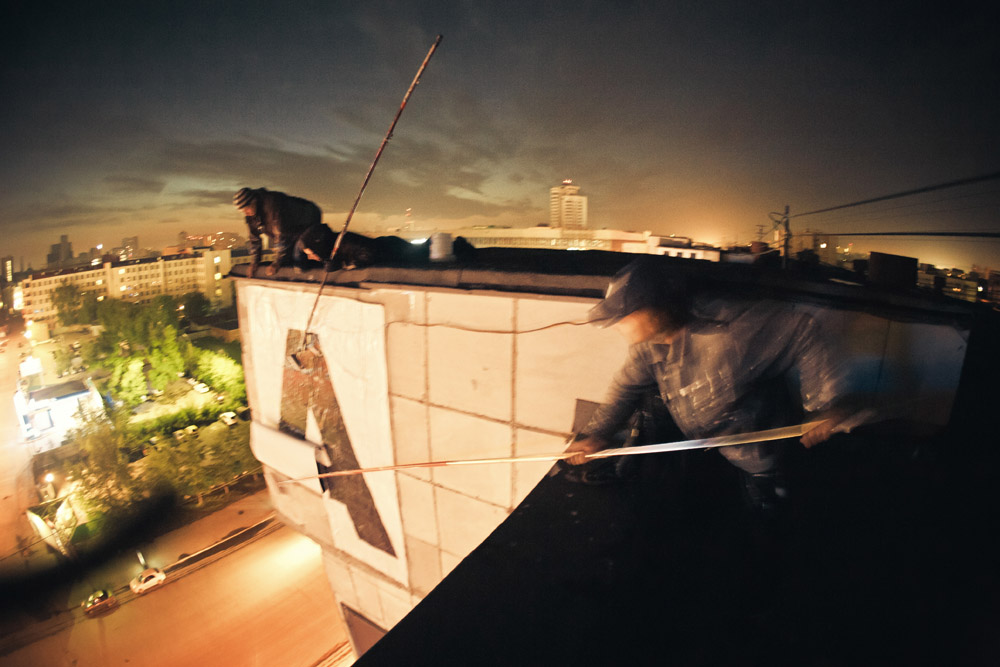
The residency, although over, has placed Radya firmly on the map, ensuring he is centre stage with both critics and the general public. To avoid much of this attention — as well as the gallery staff — he usually uses his studio during the night, picking his preferred tools from an arsenal of saws, paintbrushes and spray cans. It wasn’t always this way. Before becoming the darling of the Yekaterinburg art world, life for Radya was much more chaotic. He recalls how he used to scurry between friends’ attics and various graffiti spots around the city, his work known only to passers-by or a select few through word of mouth. Despite the residency and the fact that he continues to work from the NCCA, Radya is adamant that he’s not part of the establishment. He still fraternises with the same small group of friends and steals away into the night when he can, he says. “I feel more of a sense of responsibility because my work has more exposure,” he says. “But it doesn’t make things more difficult for me.”
The former philosophy student first came to the attention of Russian critics on 9 May 2008, a national holiday to mark the surrender of Nazi Germany to the Soviet Union in the Second World War. After The War, a collage of a man with a raised handgun made from archive photos of soldiers placed on the wall of the region’s local history museum, was an instant hit. This sense of national pride is a motif that runs through much of Radya’s street art, winning him the affection of the public. In another of his works, he celebrated the achievements of Soviet cosmonauts by plastering the city with newspaper articles about Yuri Gagarin, the first man to journey into space. And, in true Radya style, he stencilled the phrase “Thank you Yuri, the cosmos is ours!” on a nearby rooftop. Yekaterinburg’s rooftops feature regularly in Radya’s work; they are, for the street artist, the perfect way to converse with the residents of his city.
Three years later and it was the British press that picked up on his portraits of unnamed Ural soldiers etched on the walls of an abandoned war hospital using fire. As with his other artworks, the faces lasted for as long as it took for the rain to wash them away. Following the success of After the War, Radya dropped out of university to focus on art. The rooftop series followed and then came Domino, on the Yekaterinburg bridge, his first large-scale project.
Radya has not let his rise in prominence prevent him from using the urban landscape to make bold statements. Following the 2011 parliamentary election, widely believed to have been rigged, he went political by painting giant billboards around Yekaterinburg with the words “You were cheated” next to a ticked box on a voting ballot. By the next day, the inscriptions had been painted over. “There are a huge number of viewers on the street,” he says. “I try to work for them.” Not long after, photos of the work went viral on Facebook. Despite the occasionally political nature of his work, he has never had any brushes with the law.
Radya’s follow-up piece was more philosophical in nature. Loss of Strength, a billboard featuring a political map of Russia, pierced with gaping holes, was a commentary on the imperfection of humankind. Dressed in a suit and wearing a balaclava, Radya and his confederates assembled the map in the dark of the night. The piece was a somewhat disillusioned response to a speech by Putin, in which he said, without a jot of irony, that Russia should be freed from corruption — and “empty slogans”.
For Radya, causing controversy is crucial in a country such as Russia where the repressive social and political atmosphere means that many artists, architects and engineers have hit a creative impasse. “The chances that something really serious will arise in one of those creative spheres is very slim,” he says. “But we have to work on this. We have to rock the boat, and artists are the most suitable way of achieving this.” True to his roots outside the establishment, he prefers to let his work speak for him. “I don’t know what to say. I can only make jokes,” he explains. “Tag the walls, fuck the system. Never talk about the club. The rest is boring.”
